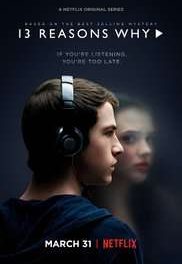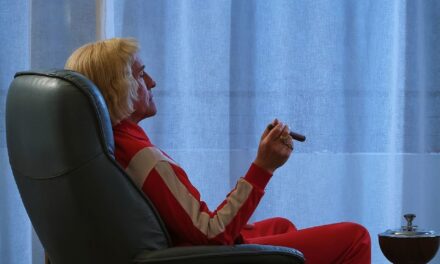I thought this time I would take a moment to reflect on some of the ideas generated by three recent CST blogs: TEACHING TELEVISION: WHERE DO I START? by Elke Weissmann, THE PLACE OF THE PROGRAMME IN TELEVISION TEACHING by Catherine Johnson TRUE DETECTIVE AND PRACTICAL CRITICISM by Jason Jacobs. I do so with some humility because I no longer actually face the dilemmas faced by Elke and Cathy in particular since I no longer teach television. But I thought the issues raised in these three blogs were well worth considering a bit further and I am not surprised that they generated an unusual number of very interesting comments.
So firstly, although I am largely a textual scholar, I always found teaching television more interesting and engaging for me than teaching film (the students of course didn’t always find it so). And that was in a way because of the difficulties which Elke so eloquently describes. I have sympathy with Jason’s concern about the status of the text in television studies (on which see more below) but I accept that sometimes the television programme will not be the main centre of interest. Indeed it is the range of voices in television studies – including producers and audiences with their different experiences and knowledge – that I find engaging.
My main aim in teaching television was to find space for these different approaches and to challenge the natural solipsism of students who think that their own experience of watching Dr Who or Breaking Bad in the early 21st Century can be defined as ‘Television’. Crucially the history of television is important here. We may well start with what the students are doing (television diaries, viewing portfolios etc are certainly useful) but as they learn, students need to be confronted with notions of difference and not just the differences in technology which while important are not determining. I remain bruised from the experience of screening The White Heather Club (BBC Scotland, 1957-68) for a first year introductory course. You can perhaps see why (this may be the first time the television audience is literally saluted as it crosses the threshold into the programme).
But I also found some great television material in which elderly Scottish viewers discussed how television arrived for them in the early 1960s – issues of access, cost, pleasure, diversity were all present in a few sentences.
Cathy’s account of the experience of organising screenings for students was heartfelt and thought-provoking. Screening material on a group basis was difficult enough when it was the only way in which students could see the material. But as a teaching method it still seems to have much going for it and not just in terms of group activity. Timetabling flexibility can help here by combining the lecture and the screening into a longer but more flexible session. But more generally I would argue that it’s important to be clear that group screenings are not trying to emulate everyday television viewing; even if the same programme were shown to small groups on a number of screens it’s not the same experience, particularly if you actively want to discourage social media use and chatting during the screening. Watching television on the big screen foregrounds, by making slightly bizarre, some of the ways in which television seeks a relationship with us through the practices that Elke describes. One success I had was screening Spongers (writer Jim Allen, BBC, 1978) and Hillsborough (writer Jimmy McGovern, BBC, 1996) in poor VCR versions to students who had consistently (and this was before flat screens and HD) complained that poor technological quality made old television unwatchable. On the big screen, they were both almost literally stunning. But it didn’t need to be drama – a very old black and white Man Alive current affairs programme on single mothers and illegitimate babies (BBC, 1965, ‘Love Me And Leave Me’) resonated with but was clearly different from the framing, filming and storytelling in current programmes about single mothers and benefits.

And of course this ‘making strange’ need not involve television from the past. At Glasgow, a Television Analysis course, deliberately paralleling the Film Analysis course, applied methods of textual analysis to a wide range of contemporary programmes, including entertainment, shopping channels, idents and continuity material (See Karen Lury’s Interpreting Television (Hodder Arnold, 2005)). And using material from other television systems ie those outside the US/UK production systems can also be highly effective in challenging our assumptions about what television looks like.
The emphasis on weekly screenings of course reflects an emphasis on the text even though Jason Jacobs in his blog argues that television studies is strangely averse to television shows themselves and more concerned with everything that surrounds them. I would suggest that this shift in emphasis is by no means confined to television studies. It is a feature of Star Studies when the object of study is very often the extra-textual paraphernalia involved in seeing stars as celebrities as opposed to the work they do and the pleasures of their performances. In Adaptation Studies, too, there is strong movement to the analysis of paratexts (often the sites where the fact of adaptation is made most explicit). Beyond film and television studies, Peter Barry in his Literature in Contexts (Manchester UP, 2007) suggests that the emphasis on contexts (‘legal, literary, social, historical, religious’) in English Studies has shifted attention away from analysis of the central text.
It is of course possible to use textual analysis to examine these paratexts or contexts. But sometimes the shift in topic is accompanied by the suggestion that there has been too much focus on the text or even that enough textual work has been done and that is time to move on to different modes of analysis. But the response I think is not, in turn, to call for less work on paratextuality but for textual scholars to be more explicit about their methods and the value of their work. Jason indeed is exemplary in consistently trying to do this and I agree with his account of textual work as ‘a species of practical criticism, with close reading as its method’. Much of the value of textual analysis is that it can demand a specificity about the text, a refusal to generalize or to simplify in the interest of demonstrating a thesis. Thus textual analysis may be valuable precisely because it alerts us to snags or anomalies in broader sociological or historical explanations. But it can also challenge the explanations offered by production analysis, including those of the showrunners who have become the new auteurs. It can produce readings which are unlikely to be found in audience studies but that doesn’t make them invalid. Our readings can be informative, inventive, surprising and experimental and, done well, they offer pleasure and insight to other viewers. Such readings too can make television strange.
But there are different traditions in textual analysis and I’m not sure it is helpful to think of textual analysis in terms of finding what is somehow ‘in the text’ or indeed seeking out what it is that might make transcendent. Our readings are a product of the particular relationship between text and the critic and they require knowledge, imagination, skill and confidence (which of course we don’t always manage to pull off). In an interdisciplinary field, textual readings of television programmes stand beside other kinds of approaches; the use of one method should not be at the expense of another although too often there are pressures of time, energy and space which can make the interdisciplinary approach of television studies difficult inside and outside the teaching space.
Christine Geraghty is an Honorary Professorial Fellow at the University of Glasgow. Her publications on television include a contribution to the 1981 BFI monograph on Coronation Street; Women and Soap Opera {Polity, 1991); and My Beautiful Laundrette (I B Taurus, 2004). Her BFR TV Classic on Bleak House was published in 2012 and her reflections on the beginning of her work on soap opera appears in ‘The BFI women and film study group 1976 – ?’, Renewing Feminisms, Radical Narratives, Fantasies and Futures in Media Studies H. Thornham and E. Weissmann (eds) I B Taurus 2013. She is on the editorial board of the Journal of British Cinema and Television and sits on the advisory boards of a number of journals, including Screen.





